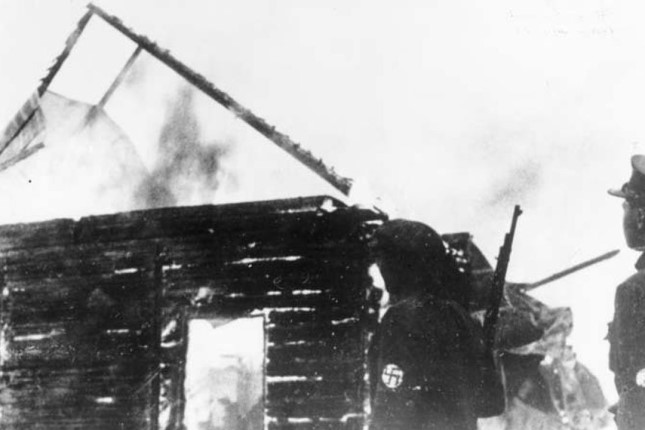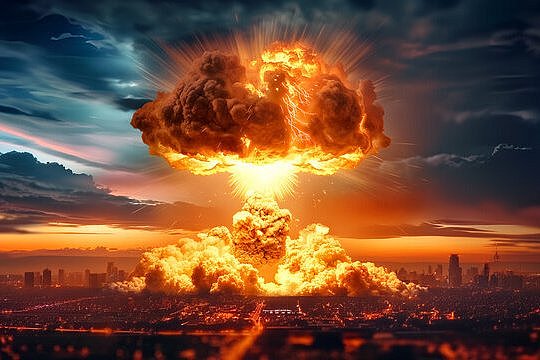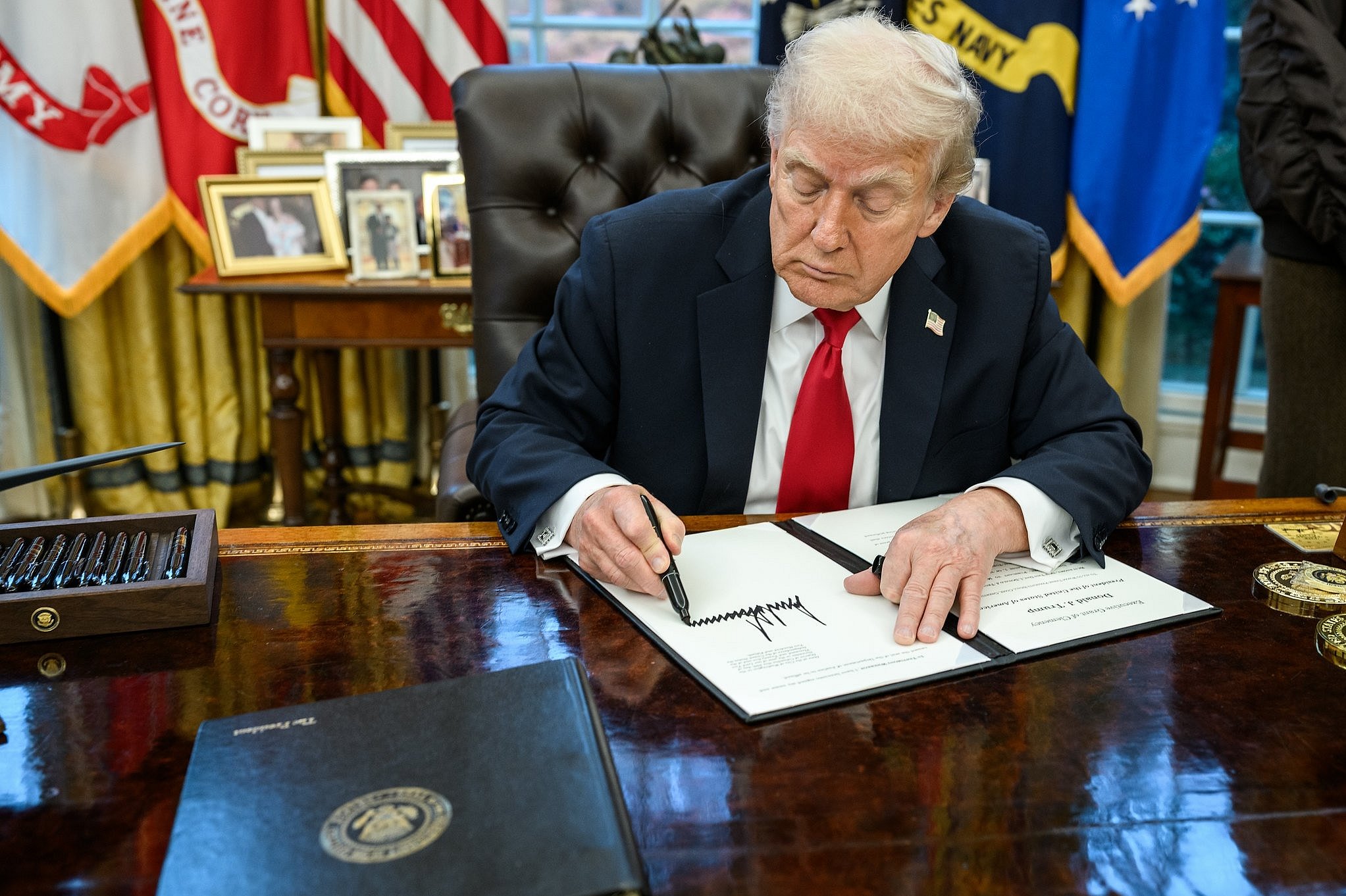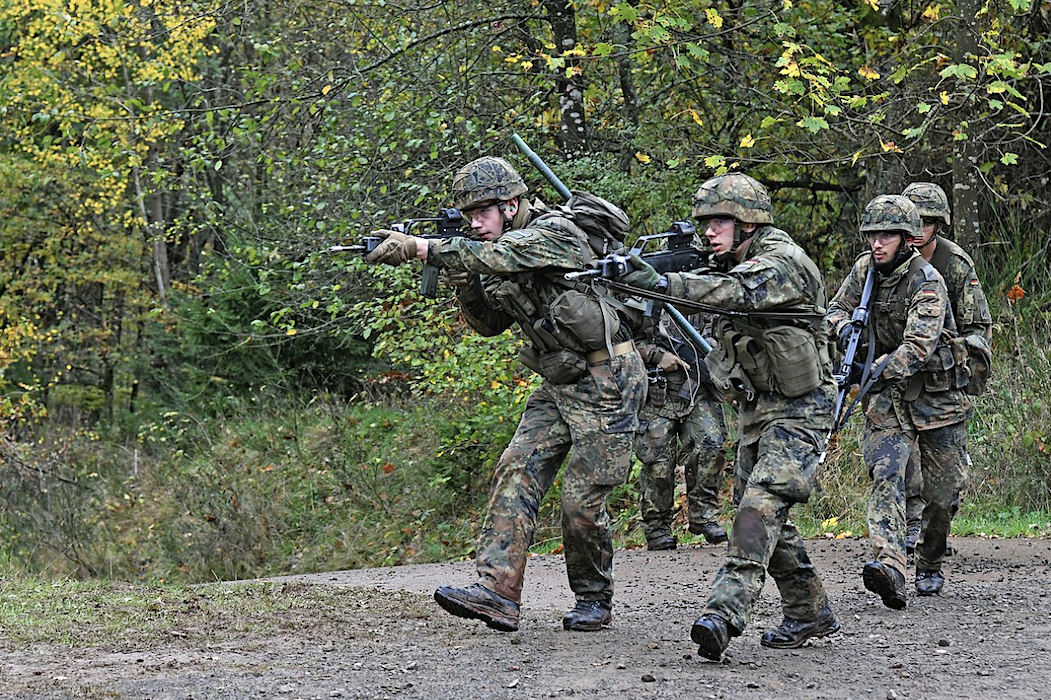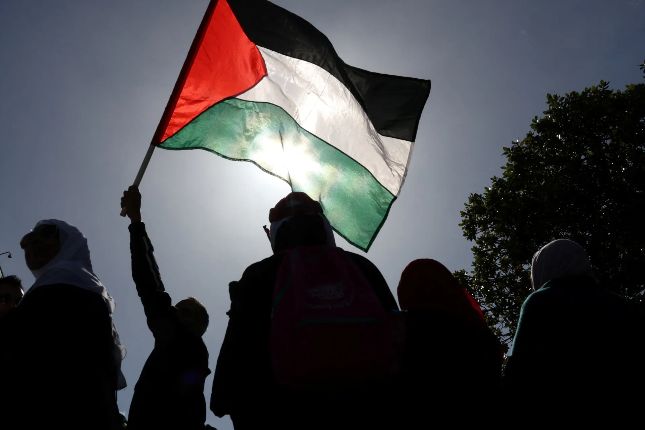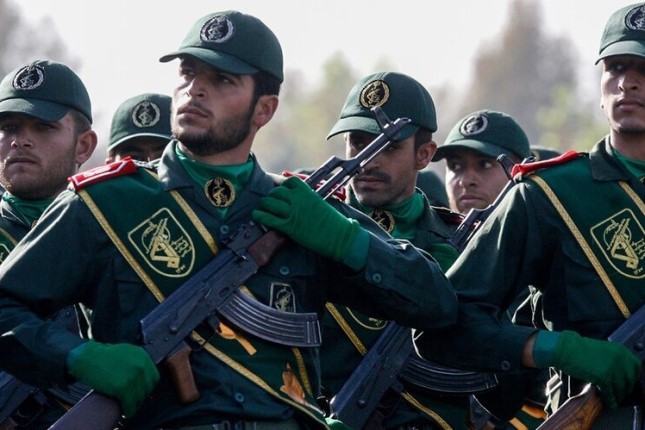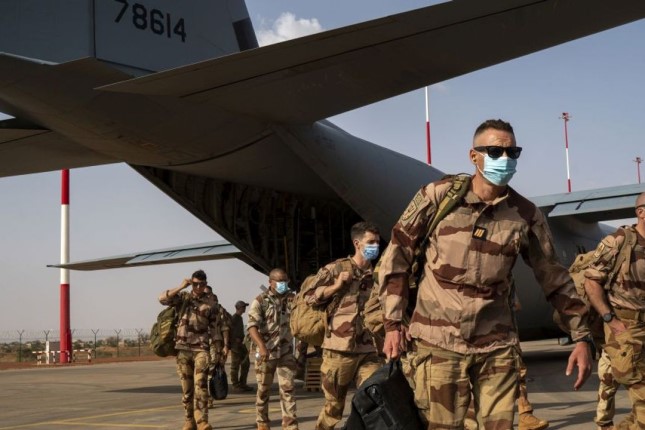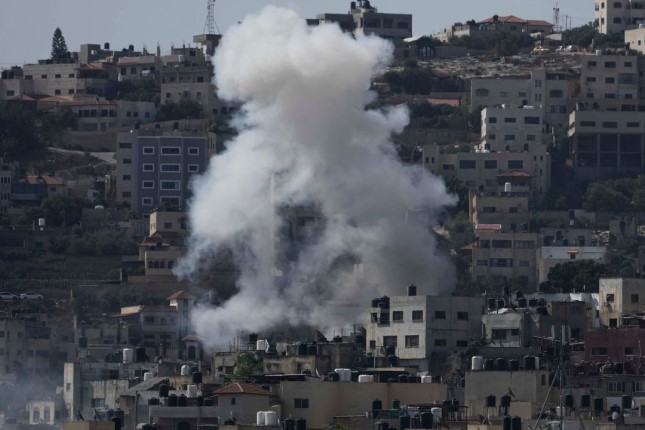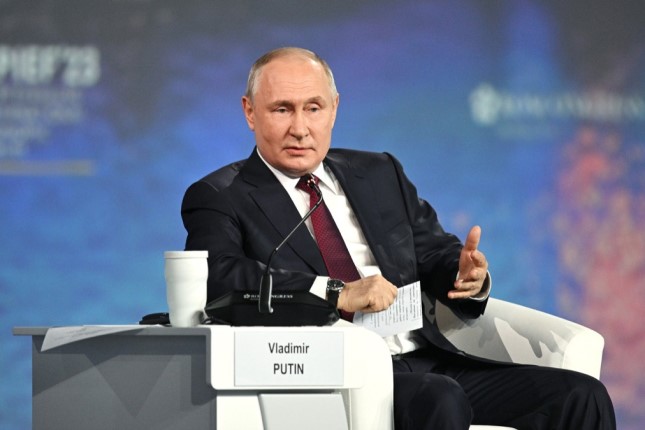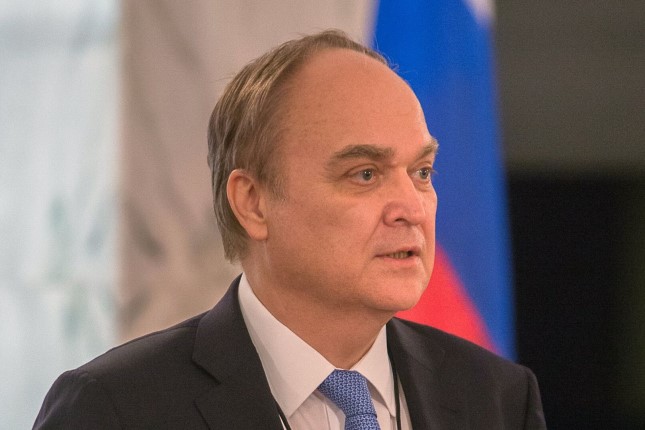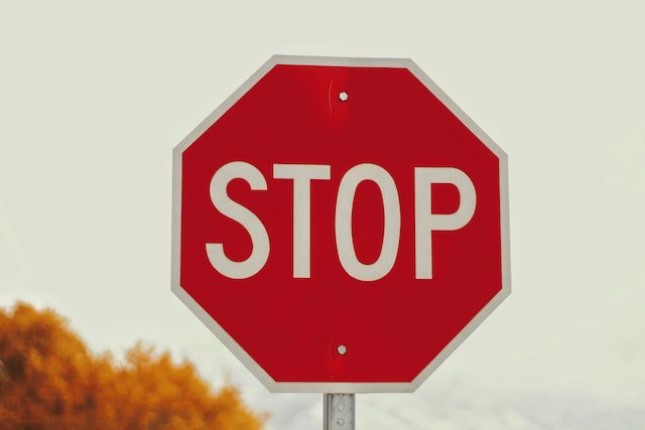Gathered yesterday NATO leaders will convene in Vilnius, Lithuania, only a few hundred miles away from the battlefield of the war in Ukraine, which has already claimed hundreds of thousands of lives.
There will be no shortage of denunciations of Russian brutality. No doubt, the Lithuanian government, in particular, will be thanked for its efforts in spearheading the NATO war or, as the obedient lackeys in the media call it, the fight to defend “democracy.”
Joe Biden, who just approved the delivery of cluster bombs to Ukraine, one of the most brutal and criminal weapons of modern-day warfare, will decry the inhumanity of Vladimir Putin. Olaf Scholz, whose government is engaged in the largest rearmament since Hitler and is about to station 4,000 German troops in Lithuania, will return to the scene of some of the worst crimes of German imperialism, spouting well-prepared war propaganda.
What will not be spoken about is the history of the city they are meeting at: Vilnius, once known as the “Jerusalem of Europe,” was the site of some of the largest and most barbaric massacres in the history of the Nazi-led destruction of European Jewry. With 95 percent of its prewar Jewish population of about 210,000 murdered, Lithuania recorded a higher death rate than almost any other country in Europe. Lithuanian nationalists were among the principal perpetrators of this historic crime.
Much like its Ukrainian counterparts, the Lithuanian bourgeoisie historically combined a tradition of bitter anticommunism with vile antisemitism. Following the Soviet occupation of Lithuania in 1940, far-right nationalists and generals fled to Germany, where they founded, in direct collaboration with the Nazi regime, the Lithuanian Activist Front (LAF).
Almost contemporaneous with the pogroms that were now launched by the Nazis and the Organization of Ukrainian Nationalists (OUN) in West Ukraine, the LAF and the German occupiers began an orgy of mass slaughter in Lithuania. Within less than three years, an 800-year-old community, which played a central role in the development of Jewish and world culture, was almost completely annihilated.
Of the approximately 210,000 Jews who lived in Lithuania prior to the Nazi invasion on June 22, 1941, 195,000 had been murdered by the end of the war in 1945. The overwhelming majority were dead by the end of 1941.
The most horrifying feature of the Holocaust in Lithuania was the open and unashamed participation of substantial sections of the population in the hunting down, torture and murder of Jews. Historian Masha Greenbaum has provided a searing account of the murderous rampage that swept through the country in the days preceding and immediately following the Nazi invasion.
The entry of the Nazis into Lithuania, which had been annexed by the Soviet Union in 1940, was enthusiastically welcomed by the nationalist, anticommunist and violently antisemitic forces. Among its leading figures was the Lithuanian ambassador to Berlin, Colonel Kazys Skirpa, who was widely known to be an ardent admirer of Adolf Hitler. In advance of the German invasion, Skirpa directed a substantial network of Lithuanian fascists. Greenbaum writes in The Jews of Lithuania: A History of a Remarkable Community 1316-1945: These cells of Lithuanian fascists, Nazi sympathizers, and Lithuanian nationalists were important constituents of the LAF, Lietuvos Aktyvistu Frontas (Lithuanian Activist Front), the largest and best organized of the nationalist groups. But there were many other factions, such as the Iron Wolf, the Lithuanian Freedom Army, the Falcons, and the Lithuanian Restoration Front. They penetrated the universities, the civil service, the professions, even the high schools. According to Lithuanian sources, the number of members in these clandestine groups and anti-Soviet units reached 100,000.
Three days before the invasion, Skirpa—in constant contact with the Nazi Gestapo (secret police) and Wehrmacht (army)—issued Leaflet No. 37 for mass distribution throughout Lithuania. It was an undisguised call for the total destruction of Lithuanian Jewry. It stated: The crucial day of reckoning has come for the Jews at last. Lithuania must be liberated not only from Asiatic Bolshevik slavery but also from the long-standing Jewish yoke. In the name of the Lithuanian people, we solemnly declare that the ancient right of sanctuary granted to the Jews in Lithuania by Vytautas the Great is abolished forever and without reservation. Jews who are guilty of persecuting Lithuanians will be brought to trial. Those who manage to escape will be found. It is the duty of all honest Lithuanians to take measures by their own initiative to stop such Jews and, if necessary, to punish them. The new Lithuanian State will be rebuilt by Lithuanians only. All Jews are excluded from Lithuania forever. … Let the Jews know the irrevocable sentence passed upon them; not a single Jew shall have citizenship rights. The errors of the past and the evils perpetrated by the Jews will be set aright, and a firm foundation for a happy future and the creative work of our Aryan nation will be laid. Let us prepare for the liberation of Lithuania and the purification of the nation.
This diatribe unleashed a rampage of homicidal violence. Be forewarned: It is difficult to read Greenbaum’s account of the monstrous crimes perpetrated against the Jews by Lithuanian mobs, who had been whipped into a frenzy by the nationalist antisemites and anticommunists. Greenbaum writes: On June 25, Lithuanian partisans who defined themselves as freedom fighters began a three-day killing rampage against Jews in smaller towns and villages, during which the entire populations of over 150 Jewish communities perished. Some Jews were driven from their homes and burned alive, after having been savagely beaten and herded into synagogues, schools and other public places that were then torched. In other instances, entire Jewish families were driven to nearby forests or riverbeds where pits or trenches had been prepared, and then shot. In several localities, such as Reiniai and Geruliai in the Telsiai area, in Meretz (Merkine), Plungian (Plunge), Sakiai (Shaki), and Kelm (Kelme), Jews were forced to dig their own graves. Virtually all the Jews in Ukmerge were herded into the synagogue and burned alive. In Seirijai, Jews were dragged naked throughout the streets and then brutally murdered in the presence of a cheering crowd. In Panevezys, Jews including several young women who had been raped were hurled into burning lime. In Kovno alone, Lithuanian partisans murdered almost 4,000 Jews during the two days that elapsed between the invasion and the arrival of German forces in the city. A particular brutal atrocity took place later in the downtown Kovno garage of the Lietukis cooperative. Some 60 Jewish men, chosen at random in the streets by the partisans, were taken to the garage and savagely beaten and tortured as a large crowd stood by and observed. As the Jews lay wounded and moaning on the ground, their torturers continued for the amusement of the crowd to beat them mercilessly until they died. Another group of Jews was dragged in to clean the garage and haul the victims away for burial. In Slobodka (Wilijampole), partisans went from house to house searching for Jews. Their victims were thrown into the River Vilija: those who did not drown were shot to death as they swam. Jewish houses were set afire and their occupants burned alive as partisans blocked the path of approaching firefighters. Hooligans who called themselves freedom fighters slaughtered Jews indiscriminately. In many instances, limbs were torn off bodies and scattered hither and yon. On June 25, partisans decapitated the Chief Rabbi of Slobodka, Zalman Ossovsky, and displayed his severed head in the front window of his house. His headless body was discovered in another room, seated near an open volume of Talmud that he had been studying. Most of these 150 localities became Judenrein (Jew-free) 24 hours before the German occupation forces arrived. This gave the local population a brief opportunity to pounce upon the homes and businesses of their former Jewish neighbors in a frenzy of pillage and plunder. Many of the killings and lootings were carried out in broad daylight amid acquiescent, often cheering witnesses. When they attended Mass in church, the partisans were praised by the priests for their courage and patriotism.
The atrocities of the final week of June 1941 continued unabated until the end of the war. Jews were the primary but not the only victims. The most notorious site of mass murder in Lithuania was the Ponary forest on the outskirts of Vilnius. It is estimated that between 1941 and 1944, up to 100,000 people, among them about 70,000 Jews, 20,000 Poles and 8,000 Soviet prisoners of war, were murdered here by German SS Einsatzgruppen and their Lithuanian collaborators. Most of the killings were carried out by an 80-men strong unit of the Ypatingasis būrys, Lithuanian volunteers organized in the SS. The slaughter was only ended with the advance of the Soviet Red Army.
After the war, many of the worst Nazi collaborators and accomplices in mass murder continued their lives unharmed. Kazys Škirpa, founder of the LAF, worked at Trinity College, Dublin, and the US Library of Congress. He died in Washington D.C. on August 18, 1979 at the age of 84.
Aleksandras Lileikis, the head of the Lithuanian Security Police in Vilnius, one of the chief organizers of the murder of the Jewish community of Vilnius, found employment with the CIA and was granted permission to emigrate to the United States. He settled in Massachusetts and acquired American citizenship. It was not until 1994 that long delayed investigations into his crimes led to his denaturalization. He returned to Lithuania, which could not evade demands for his prosecution on the charge of genocide. But Lileikis died in September 2000 at the age of 93 before a verdict was reached.
In the aftermath of the dissolution of the Soviet Union, the new Lithuanian bourgeoisie promoted the rehabilitation of its Nazi-collaborating ancestors. While occasionally issuing, for reasons of political expediency, pro forma and callous statements of official regret over the extermination of Lithuanian Jewry, the government and major parties minimized and covered up the scale of the crimes committed between 1941 and 1945.
As one of its first acts, the new Lithuanian parliament rehabilitated Lithuanians convicted of collaboration with the Nazis by the Soviet government. Streets were named after LAF leaders like Škirpa. Lithuania’s state-run Military Academy, which is affiliated with other NATO military academies, was named after Jonas Žemaitis, another infamous Nazi collaborator. Meanwhile, Holocaust survivors who fought with the Soviet partisans against the Nazis and their Lithuanian allies were put on trial for “collaboration” and “war crimes.”
The case of the Lithuanian fascist Jonas Noreika has acquired international notoriety. Executed in the Soviet Union after the war, he was posthumously celebrated by the post-1991 Lithuanian regime as a fighter against “communist tyranny.” Streets were renamed in his honor, and Noreika was awarded the Cross of Vytis, the highest honor bestowed by Lithuania upon a deceased person. But in the year 2000 Noreika’s granddaughter came across long concealed family documents that revealed that he had “ordered all Jews in his region of Lithuania to be rounded up and sent to a ghetto where they were beaten, starved, tortured, raped and then murdered.” (Op-ed published on January 27, 2021 in the New York Times, “No More Lies. My Grandfather Was a Nazi,” by Silvia Foti).
Despite these revelations, Noreika is still honored in Lithuania as a national hero. A memorial plaque honoring his memory remains in place at the Lithuanian Academy of Sciences. A documentary denouncing this travesty of historical truth, titled J’Accuse, has been recently completed and was viewed in December 2022 at the Miami Jewish Film Festival.
Lithuanian Prime Minister Ingrida Šimonytė and Foreign Minister Gabrielius Landsbergis, with whom Biden, Scholz, France’s Macron and the UK’s Rishi Sunak will discuss the advisability of Ukraine’s accession to NATO and direct troop deployments, are members of the ruling Homeland Union party, whose deputies have a sordid record of antisemitic outbursts.
In 2019, the only remaining Jewish synagogue in the country, in Vilnius, had to be indeterminately shut down because of persistent threats by the far right. According to a statement by the Lithuanian Jewish community, the Homeland Union party not only refused to intervene but also encouraged far-right forces by exhibiting “the continual, escalating publicly-expressed desire … for recognizing perpetrators of the mass murder of the Jews of Lithuania as national heroes and the demand these people be honored with commemorative plaques and by other means.”
Biden, Scholz, Macron and Sunak are not ignorant of this history. But they view any exposure of the crimes of Nazis and their collaborators as revealing inconvenient truths that cut across their geopolitical agendas and, therefore, must be whitewashed and suppressed.
The proxy war being waged in Ukraine has been driven and justified by lies. The falsification of history and the rehabilitation of the Nazis and their collaborators in Ukraine, Poland, Lithuania and Germany are essential components of NATO’s agenda.
A grotesque historic logic is at work in the assemblage of NATO conspirators in Vilnius. The leaders of present-day world imperialism plot their new crimes against humanity beneath the dark shadows of those committed 80 years ago.
Photo: Lithuanian Security Police members burning a Lithuanian synagogue in 1941.
Source: World Socialist Web Site.
